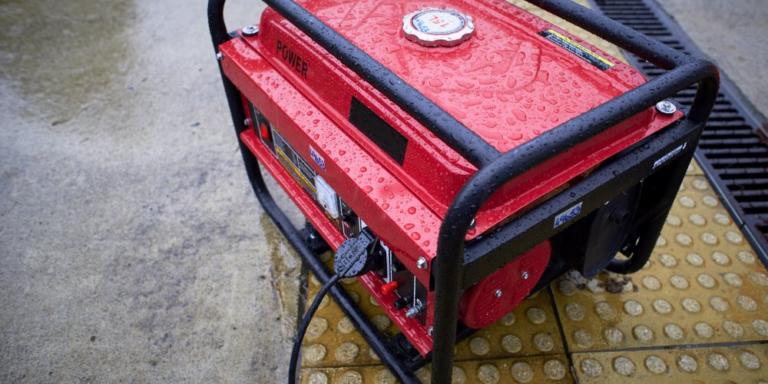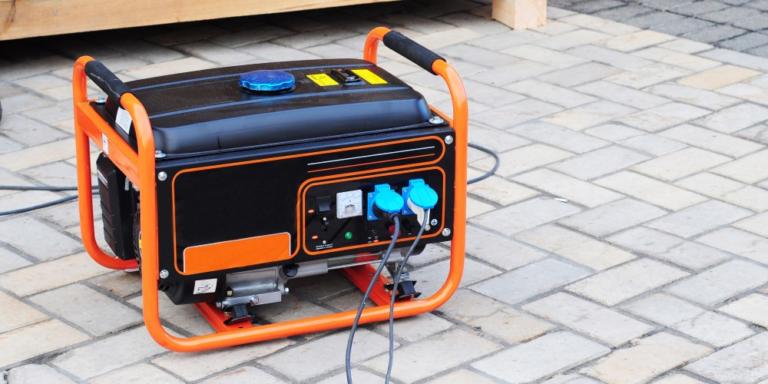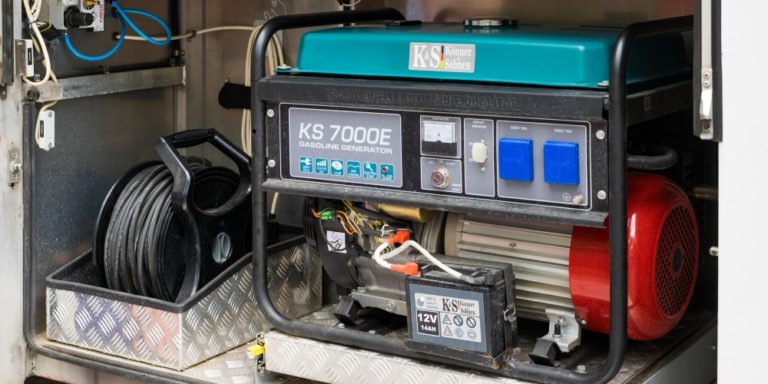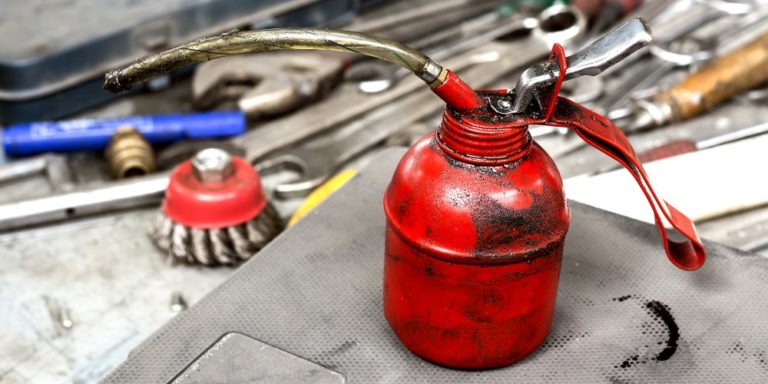When it comes to powering our homes or outdoor activities, having a reliable source of electricity is essential. Generators and inverter generators are two popular options that provide power when we need it most.
But what is the difference between these two types of generators? While both generators and inverter generators produce electrical power, there are significant differences in the way they operate, their power output, and their fuel efficiency.
In this article, we will explore the advantages and disadvantages of inverter generators, explain how they work, and compare them to traditional generators.
We will also provide guidance on selecting the right inverter generator for your needs and offer safety and maintenance tips.
THE KEY TAKEAWAY:
An inverter generator is a type of portable generator that uses inverter technology to produce clean, stable electricity. This technology allows the generator to adjust its engine speed in response to the electrical load, resulting in more efficient operation and less noise. Inverter generators are typically smaller and lighter than traditional generators, making them ideal for camping and other outdoor activities.
When deciding which generator is right for your purposes, you’ll probably want to consider a number of factors.
Here, we’ll take a closer look at how inverter generators stack up with standard generators in several important categories.
1. Design and Portability
In most cases, inverter generators are noticeably lighter and more compact than other types of generators.
As a result, most models of inverter generators are quite portable, making them a popular choice for activities like camping and RV travel.
Inverter generators come in two main sub-types: closed-frame and open-frame.
CLOSED-FRAME INVERTER GENERATORS
- Larger and Heavier: Closed-frame inverter generators are typically larger and heavier compared to open-frame models.
- Less Portable: The added size and weight can make them less portable and more challenging to transport, especially without the assistance of built-in wheels or handles.
- Storage Considerations: Due to their larger dimensions, closed-frame generators may require more storage space, which is something to consider if you have limited storage capacity.
- Sturdier Build: The closed-frame design often incorporates a more robust and sturdy construction, which can be advantageous in demanding environments but comes at the cost of increased weight and bulk.
- Quieter: Closed-frame models are quieter, making them a better choice for situations where noise levels need to be kept low, such as camping, residential areas, or events.
OPEN-FRAME INVERTER GENERATORS
- Smaller and Lighter: Open-frame inverter generators are generally more compact and lightweight compared to their closed-frame counterparts.
- Portability: Due to their smaller size and reduced weight, open-frame models are easier to transport and handle. They are a good choice if you need a portable power source for various locations or outdoor activities like camping.
- Storage: Their compact size makes them easier to store in tight spaces, such as a garage or storage shed.
- Suitable for Smaller Spaces: Open-frame generators are well-suited for situations where space is limited or when you need to transport them in smaller vehicles.
- Noisier: These generators are generally louder, especially at full load. They can be as noisy as conventional synchronous portable generators, making them less suitable for quiet environments.
In summary, the choice between open-frame and closed-frame inverter generators in terms of size and weight depends on your specific needs.
Open-frame models are preferred for their portability and ease of storage, while closed-frame generators offer a sturdier build but are less portable due to their larger size and weight.
Inverter generators are commonly used for a variety of purposes, such as:
- Outdoor activities: Camping, RVing, tailgating, and other outdoor activities where a reliable power source is needed. Their small size and low noise levels make them ideal for use in quiet environments.
- Backup power: Inverter generators can provide emergency power during power outages, allowing people to continue using essential electrical appliances and devices.
- Special events: Concerts, festivals, and sporting events, where a temporary power source is needed. They can provide power for lighting, sound systems, and other equipment, allowing the event to run smoothly and efficiently.
- Work sites: Construction sites, where a portable power source is needed for tools and equipment.
On the other hand, here are some situations where traditional generators may be preferred:
- High power demands: Traditional generators can provide a high power output, typically in the range of 5,000 watts or more, making them suitable for powering heavy-duty equipment and large appliances. They are often used in industrial settings, construction sites, and farms where high power demands are required.
- Longer runtime: Traditional generators typically have larger fuel tanks and can run for longer periods of time on a single tank of fuel than inverter generators. This makes them ideal for situations where continuous power is needed for extended periods, such as during power outages or in remote locations.
- Lower cost: Traditional generators are generally less expensive than inverter generators of the same power output. This makes them a more cost-effective option for people who need a power source but have a limited budget.
- Durability and ruggedness: Traditional generators are typically built to withstand harsh environments and rough handling. This makes them a better option for use in construction sites, farms, and other outdoor locations where they may be subjected to rough conditions.
- Minimal technical knowledge: Traditional generators have simpler designs and are easier to maintain and repair than inverter generators. This makes them a better option for people who have limited technical knowledge and skills.
Overall, traditional generators are preferred in situations where high power demands, longer runtime, lower cost, durability, and ruggedness are required.
2. A Higher Price
With any type of generator, the price can vary quite a bit depending on the power output and specific features of the unit.
However, inverter generators are a fair bit more expensive than most other types of generators on average.
For example, if you were to look at a standard portable generator and an inverter generator with similar wattage outputs, there’s a good chance that the inverter generator would cost several hundred dollars more.
Of course, the cheapest inverter generator will still be much less expensive than most high-end standard generators, so you should always consider the quality and specifications of the devices.
3. Noise Levels
In most cases, inverter generators will run more quietly than other types of generators. This is especially true with closed-frame models.
Typically, the low noise levels of inverter generators are a major selling point for consumers.
That said, there are also many models of standard generators that come equipped with special noise reduction features. Here is a detailed dB(A) Chart of Honda generators with noise level comparisons, in case you are interested.
On average, though, an inverter generator will be a better choice if quiet operation is a priority for you.
Here are some examples of the quietest inverter generators on the market:
- Honda EU2200i – 48 dB(A) @ 1/4 load and 57 dB(A) @ full load
- Honda EU3000iS – 50 dB(A) @ 1/4 load and 57 dB(A) @ full load
- Yamaha EF2200iS – 57 dB(A) @ 1/4 load and 65 dB(A) @ full load
- PREDATOR 3500 – 56 dB(A) @ 1/4 load
- Westinghouse iGen4500 – 52 dB(A) @ 1/4 load
- WEN 56200i – 51 dB(A) @ 1/4 load
- Champion 2500-Watt Inverter – 53 dB(A) @ 1/4 load
- A-IPOWER SUA2000iV – 52 dB(A) @ 1/4 load
4. Fuel Efficiency
If you’re looking to select a generator with excellent fuel efficiency, you can’t go wrong with an inverter generator.
Because of their ability to adjust the speed of their motors, inverter generators never use more fuel than they need to for the job at hand.
This is in contrast to most standard generators, which produce a steady amount of power at all times.
As a result, you will likely be able to offset a significant chunk of the purchase price of your inverter generator by saving money on fuel in the long run.
Additionally, inverter generators typically have lower emissions than other types of generators, meaning they tend to be more eco-friendly as well.
Inverter generators typically run on gasoline or propane, while traditional generators may also run on diesel fuel. This can be an important factor to consider depending on the availability and cost of different fuel types in the area where the generator will be used.
5. Parallel Operation
Many models of inverter generators offer the capability to parallel with other generators.
This nifty feature helps make up for what inverter generators lack in power, as you can significantly increase that output by pairing two units and combining their power.
To do so, you simply need two generators with parallel capability and a parallel cable.
Granted, this option is only possible with certain models, but it’s typically more common with inverter generators than it is with standard units.
6. Longer Run Time
It’s important to note that many factors influence how long a generator can run, including the size of the fuel tank, the type of fuel, and the specific power demands.
So, there’s no general rule for how long inverter or standard generators can run. However, inverter generators do typically offer longer run times on average than standard generators.
This is mostly due to the aforementioned ability that inverter generators have to automatically throttle down when less power is needed.
On average, a standard generator will likely be able to run for approximately six to 10 hours, while an inverter generator will be able to run for about 10 to 16.
Depending on the situation you’re in and what you’re using the generator for, that extra four to six hours can certainly make a significant difference.
7. Quality of Power Output
Although standard generators are usually capable of producing more power than inverter generators, the power that inverter generators produce is typically cleaner.
This is mainly an important consideration when you’re powering sensitive devices.
If you attempt to power your smartphone or computer with a standard generator, the high THD of the electricity could potentially damage the device.
The upper limit for THD when powering sensitive electronic equipment is typically 5%.
Higher THD levels can cause voltage fluctuations and other electrical distortions that can damage or interfere with the operation of sensitive electronic equipment.
Here are some examples of inverter generators that produce power with the lowest THD levels:
- CHAMPION 8750-Watt Inverter Generator – (less than 3% THD)
- WEN 56380i Inverter Generator – (less than 2% THD)
- Westinghouse iGen4500DF Inverter Generator – (less than 3% THD)
- Honda EU2200i Inverter Generator – (less than 3% THD)
- FIRMAN W01682 Inverter Generator – (less than 3% THD)
- A-IPOWER SUA2300i Inverter Generator – (less than 3% THD)
When you’re powering heavy-duty equipment or large appliances, this is unlikely to be an issue.
What Is an Inverter Generator?
Put simply, an inverter generator is a generator that inverts electricity to provide clean, efficient energy.
With a traditional generator, the power is produced by the alternator, then fed to the control panel, where it’s used to provide power to your appliances, power tools, electronics, etc.
(Here is our list of the power consumption of the most common appliances you can find in your home. Feel free to check it out.)
With an inverter generator, though, an extra step is added to the process, allowing the unit to produce cleaner power.
Here is a quick overview of the whole process:
- The engine of the inverter generator converts fuel into mechanical energy.
- The mechanical energy produced by the engine is used to turn a rotor inside an alternator, which generates AC power.
- The AC power generated by the alternator is then sent to a rectifier, which converts the AC power from the alternator into DC power.
- The DC power from the rectifier is then sent to an inverter, which converts it back into AC power.
- The AC power produced by the inverter is then sent to the generator’s outlets, where it can be used to power electrical devices.
Moreover, this type of generator adjusts its engine speed to meet the demands for power supply thus reducing overall fuel consumption and noise levels.
PROS OF AN INVERTER GENERATOR:
- Produces power with significantly lower THD
- Lighter and smaller
- More energy efficient than traditional generators
- Much lower fuel consumption
- Parallel capability
- Safe for sensitive electronics like laptops or mobile phones
- Quieter than traditional generators
CONS OF AN INVERTER GENERATOR:
- Significantly more expensive than traditional generators
- Lower power output – limited wattage range
- Costly repairs and servicing
- Limited fuel options
How Does an Inverter Generator Work?
When an inverter generator is producing power, the process is a bit more complex than it is with a standard generator. Here is a great overview of the way standard generators work and a description of individual parts of a generator as well.
Instead of being sent directly to the control panel, the AC (alternating current) power produced by the alternator is sent to a device called a rectifier.
The rectifier converts the AC power to DC (direct current) power. You can learn more details about how a rectifier works in this article here. Then, the computer inside the generator inverts the DC power back to AC power.
That last step is why these generators are called “inverter” generators.
Finally, the AC power is sent to the control panel before being used to power whatever the generator is connected to. Now, the power is “cleaned” and safe for all sensitive & smart devices.
Let’s recap how an inverter generator works:
- The engine of the inverter generator converts fuel into mechanical energy.
- The mechanical energy produced by the engine is used to turn a rotor inside an alternator, which generates AC power.
- The AC power generated by the alternator is then sent to a rectifier, which converts the AC power from the alternator into DC power.
- The DC power from the rectifier is then sent to an inverter, which converts it back into AC power.
- The AC power produced by the inverter is then sent to the generator’s outlets, where it can be used to power electrical devices.
And here is a nice explanation from HONDA, the producer of top-rated generators:
“Honda ‘s inverter technology takes the raw power produced by the generator and uses a special microprocessor to condition it through a multi-step process.
First, the generator’s alternator produces high voltage multiphase AC power. The AC power is then converted to DC.
Finally the DC power is converted back to AC by the inverter. The inverter also smoothes and cleans the power to make it high quality. A special microprocessor controls the entire process, as well as the speed of the engine.”
What Are the Pros of Inverter Generators?
One of the most notable advantages of inverter generators is that they’re perfect for powering small devices, such as computers, televisions, and smartphones.
Because of the inversion process that takes place within the generator, an inverter generator produces power with a significantly lower THD (total harmonic distortion) than that of a standard generator.
THD is a measure of how clean the power is, and when you’re powering sensitive electronics, you want a lower THD to ensure that they don’t become damaged.
Another advantage of inverter generators is that they’re typically more energy-efficient than most other types of generators.
This is because unlike standard generators, inverter generators electronically throttle their engines up and down depending on the current demand for power.
That way, they only use as much energy as is absolutely necessary for the task at hand, rather than running at full power all the time.
As a result, you’ll usually have more time before you need to refill an inverter generator’s fuel tank than you would with most other types of generators.
SUMMARY OF PROS:
- Produces power with significantly lower THD
- Lighter and smaller
- More energy efficient than traditional generators
- Much lower fuel consumption
- Parallel capability
- Safe for sensitive electronics like laptops or mobile phones
- Quieter than traditional generators
What Are the Cons of Inverter Generators?
To most consumers, the most significant disadvantage associated with inverter generators is the price tag.
On average, inverter generators are significantly more expensive than most other types of generators.
As a result, they are typically purchased by people with specific needs as well as people working with very large budgets.
If you have a limited amount of money to spend, you’ll probably only want to go with an inverter generator if it’s a significantly better fit for your needs than other generator types.
The other disadvantage of inverter generators is that they have a limited wattage range.
While some traditional generators can produce upwards of 17,000 watts, inverter generators don’t usually reach figures higher than around 7,000.
As a result, there are many situations in which an inverter generator simply won’t provide enough power to be effective, making them somewhat of a niche product.
SUMMARY OF CONS:
- Significantly more expensive than traditional generators
- Lower power output – limited wattage range
- Costly repairs and servicing
- Limited fuel options
Why Are Inverter Generators More Expensive?
There are a couple of reasons why inverter generators tend to come with larger price tags than standard generators.
For one, you’re typically paying extra for the improved efficiency and quieter operation.
Additionally, there’s the fact that inverter generators utilize modern, innovative technology for the power inversion process, and that technology is not cheap to design.
Ultimately, you have to evaluate your own needs and situation to decide if it’s worth spending more money for an inverter generator.
There are plenty of contexts in which a standard generator will be a great choice, but if you have a genuine need for an inverter generator, then they’re worth the investment.
Generator Safety Tips & Precautions
There are some universal rules and precautions you need to follow when you want to run your generator safely.
The best document on this topic is the OSHA Fact Sheet: Using Portable Generators Safely and here is a quick summary:
- Never attach a generator directly to the electrical system of a structure (home, office, trailer, etc.) unless a qualified electrician has properly installed the generator with a transfer switch.
- Always plug electrical appliances directly into the generator using the manufacturer’s supplied cords or extension cords that are grounded (3-pronged). Inspect the cords to make sure they are fully intact and not damaged, cut or abraded.
- Use ground fault circuit interrupters (GFCIs), especially where electrical equipment is used in or around wet or damp locations. GFCIs shut off power when an electrical current is detected outside normal paths.
- Never use a generator indoors or in enclosed spaces such as garages, crawl spaces, and basements. NOTE: Open windows and doors may NOT prevent CO from building up when a generator is located in an enclosed space.
- If you or others show symptoms of CO poisoning—dizziness, headaches, nausea, tiredness – get to fresh air immediately and seek medical attention.
- Keep fuel containers away from flame producing and heat generating devices (such as the generator itself, water heaters, cigarettes, lighters, and matches).
For more safety tips and precautions, read this article called “Generators and Heating Safety” from New York State Department of Health or the OSHA Fact Sheet: Using Portable Generators Safely.
The Bottom Line
As you can see, there is certainly plenty of merit to inverter generators. These specialized devices aren’t right for every purpose or every person, but they offer quite a few advantages.
If you prioritize things like fuel efficiency, quietness, portability, and the ability to safely power sensitive electronics, you really can’t go wrong with an inverter generator.
Fortunately, there are many different types and models of generators available with various features and specifications.
No matter what your personal needs and preferences are, you should be able to find a generator that’s an excellent fit.
That perfect fit may not be an inverter generator, but it’s absolutely worth considering one before you make your choice.
READ NEXT ON GENERATORIST:
- Choosing the Best Generator for Your Household
- What Size Generator Do I Need to Run a Refrigerator?
- Best 2000 Watt Portable Generators
- Power Consumption of Household Appliances
- How to Store Your Portable Generator: Short Term & Long Term Storage Tips
- List of Electric Appliances & Their Wattage Usage
- What Can You Run on a 2000 Watt Generator?
- How to Easily Tune Up Your Generator
About Generatorist

Matthew Gerther
Founder, Generator enthusiast
Our aim here at the Generatorist is to become the No. 1 resource for all things related to generators & your power needs. We have helped over 600,000 visitors with our tips, articles and reviews and we will help you as well.
Our work has been featured in many publications around the world – Yahoo.com, Telegram.com, PaylessPower.com, PopSci.com, TopTenReviews.com, TechRepublic.com, iRV2.com, ThePrepared.com, Renogy.com or ADT Solar. Generators are our passion, and we strive to provide the most reliable & most comprehensive information out there.










